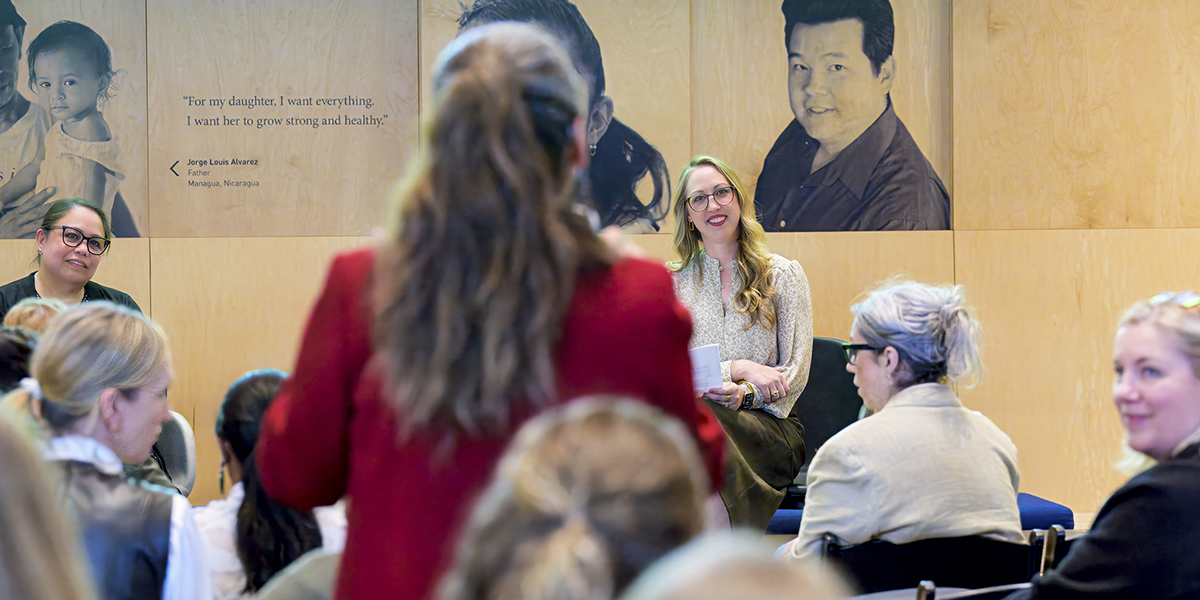Written by L&T COO: Ashley Jude
Diverse representation drives performance & innovation. Full Stop.
Let’s cut to the chase. Diverse, inclusive companies deliver more innovation and better results.
Organizations that intentionally invest in inclusive teams perform better. Diverse organizations gain 20% more innovation, and those that are both diverse and have inclusive cultures reap even more benefits. Companies with inclusive organizations are 2x more likely to meet or exceed financial targets, 6x more likely to be innovative and agile, and 8x more likely to achieve better business outcomes.
If we know that inclusion drives innovation, why are our workplaces still struggling to achieve belonging?
A story about intentional allyship
Meet a friend of Lions & Tigers, Tyler, a senior sales leader with a major tech player.
In the past three years, Tyler went on an equity journey at work, asking his leadership to trust him as he grew his team by 2x. Intentionally hiring diverse lived experiences onto his team, they have achieved:
- +66pt growth in women in leadership positions
- Non-white identifying team members increased +28 pts
- +18pt increase in parents
The outcome: 30%+ lift in sales results and productivity over the past three quarters (even adjusting for team size changes).
Economic access is a core driver
Sometimes we meet folks like Tyler, who are intrinsically driven to change the dynamics of a workplace – but not often. Many times, folks feel like they can’t effect change within the culture of their organization. Discrimination and systemic barriers push talented innovation-generators out of traditional employment.
32% of ethnic minority workers have left or considered leaving a job due to lack of flexibility, compared with just 21% of white workers. 42% of mothers say that flexible work would enable them to reenter the workforce post-pandemic.
Rather than losing talented, underrepresented folks, it’s possible to keep their voices in our workplace as independent workers.
“I talk every day to candidates who want to work in cultures that are safe for them to be their authentic selves, but they can’t find it in traditional employment scenarios, so they call us,” said Jocylynn Kelley, Talent Acquisition & DEI Program Manager for Lions & Tigers.
By providing access to fair wages, fractional work, and psychologically safe work environments, it’s possible to build economic access and inclusion into traditional workplaces with a blended workforce.
Two steps forward, one step back. So, now what?
We thought we were on a good path toward sustainable workplaces. COVID-19 accelerated remote, flexible working arrangements, enabling more people to work and act as caregivers – integrating work and life. But then kids stayed home, schools and childcare stayed closed, and caregivers burned out. 2.4 million women left or were exited from the workforce between February 2020 and February 2021. That is more than half of those that left the labor force even though women account for less than half of the labor force.
A social justice reckoning followed in 2021. Many companies made real, intentional commitments; others were perhaps performative, but regardless, investments were made into DEI education, resources, training, upskilling initiatives, executive roles and programs. Now we see them pulling back.
Economic uncertainty pushed companies to cut overhead expenses, and DEI is often the first to be reduced. By January 2023, according to Monster’s 2023 future of work report survey, only 5% of recruiters indicated that DEI is a top three priority for their teams right now. Despite 42% of potential employees indicating that they want to know that “the organization is diverse and inclusive of all types of people.”
So now what? How do we prioritize diversity and inclusion as key components of our business strategies to create more innovative, successful companies when market trends are working against us?
Invest in a diverse and inclusive independent workforce
Build a bended workforce strategy, incorporating contract workers to:
- Access talented, diverse workers who have opted into freelance work.
- Run a more agile operating model, allowing the business flexibility to flex up and down skills with actual pace of customers and competitors.
Our Founder & CEO Brea Starmer shares that by prioritizing access to project work, underrepresented talent can be unlocked.
“A key talent strategy is to build blended organizations with both employees and non-employee talent, centering flexibility for women and BIPOC talent,” says Starmer. “Freelancing, entrepreneurship, and outsourcing are strategies we see work to build flexibility into work environments, and this model mutually benefits companies that need these specialized skills.”
Read more about Brea’s philosophy and approach to building inclusive, blended teams in her open-source playbook “Avoiding the All-Or-Nothing Workplace: Enabling People to Operate at their Highest & Best Use™” In it you will find the information and frameworks you need to de-risk P&Ls, unlock skills agility to keep pace with customers and competition and create access to more diverse and inclusive talent, driving profitability and innovation.
Sources:
https://learnmore.monster.com/monster-work-watch-report
https://www.gallup.com/workplace/389807/top-things-employees-next-job.aspx








0 Comments